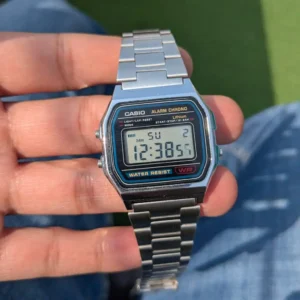The watch market is on the brink of substantial growth, with forecasts suggesting an increase from $77.48 billion in 2024 to $120.78 billion by 2033. This represents a compound annual growth rate (CAGR) of 5.06%. Several factors contribute to this expansion, including shifts in fashion and lifestyle trends, technological innovations, rising economic prosperity, and the proliferation of online retail and e-commerce platforms.
Fashion and Lifestyle Evolution
Today’s consumers are increasingly drawn to watches that reflect their personal style, whether it be sporty, minimalist, or avant-garde. Social media, along with fashion influencers and celebrities, significantly influences these preferences, with 67% of consumers reportedly swayed by social media in their purchasing choices. Brands that successfully integrate modern materials, colors, and design elements are more likely to appeal to consumers, highlighting the industry’s ability to adapt to evolving fashion and lifestyle trends.
Economic Growth and Consumer Spending
Economic prosperity and rising disposable incomes have spurred demand for luxury and high-end watches. As consumers’ financial situations improve, they are more inclined to invest in premium timepieces as symbols of status and achievement. According to the Bureau of Labor Statistics, there was an 8.3% increase in average income in 2023, boosting consumer confidence and spending on luxury goods.
Technological Advancements in Watchmaking
The incorporation of technology into watches, particularly smartwatches, is a key growth driver. These devices offer features beyond traditional timekeeping, such as GPS, fitness tracking, and app integration, appealing to a tech-savvy audience. The fusion of traditional watchmaking with advanced technology has attracted a new segment of consumers who value both functionality and style.
Counterfeiting: A Persistent Challenge
Counterfeiting poses a significant challenge, undermining consumer trust and brand integrity. Fake watches, often sold at a fraction of the price, threaten the sales of genuine products, especially in the luxury segment. Addressing counterfeiting requires stronger intellectual property protections and heightened consumer awareness.
Regional Market Dynamics
Regional dynamics are crucial to the watch market’s growth. North America and Europe are dominated by luxury and smartwatch segments, driven by affluent and tech-savvy consumers. Meanwhile, the expanding middle class in Asia-Pacific, particularly in China and India, is driving demand for both luxury and affordable watches. The Middle East shows a strong preference for luxury timepieces, while Africa is emerging as a market for affordable options.
United States Market Insights
The US market is characterized by a high demand for luxury and high-end watches, driven by consumers’ appreciation for craftsmanship and engineering. Smartwatches are also gaining traction, offering connectivity, multifunctionality, and fitness tracking features. The rise of e-commerce has made it easier for consumers to access a wide range of watch brands and styles.
Germany’s Watch Industry
Germany’s market combines tradition with innovation, with luxury brands like A. Lange & Sohne and Glashutte Original leading the way. The market is also embracing smartwatches, with health-monitoring features becoming popular among consumers who value quality and technological advancements.
India’s Expanding Watch Market
India’s watch industry is rapidly growing, catering to diverse consumer preferences with both luxury and affordable options. The popularity of smartwatches is on the rise, driven by tech-savvy consumers and health-conscious features. The market is evolving with the introduction of innovative, cost-effective wearables.
Saudi Arabia’s Demand for Luxury
In Saudi Arabia, the demand for luxury timepieces is strong, fueled by a growing number of affluent individuals. Smartwatches are also gaining popularity, offering features tailored to health-conscious consumers. The market values quality, design, and brand reputation, balancing traditional and modern watch technologies.








